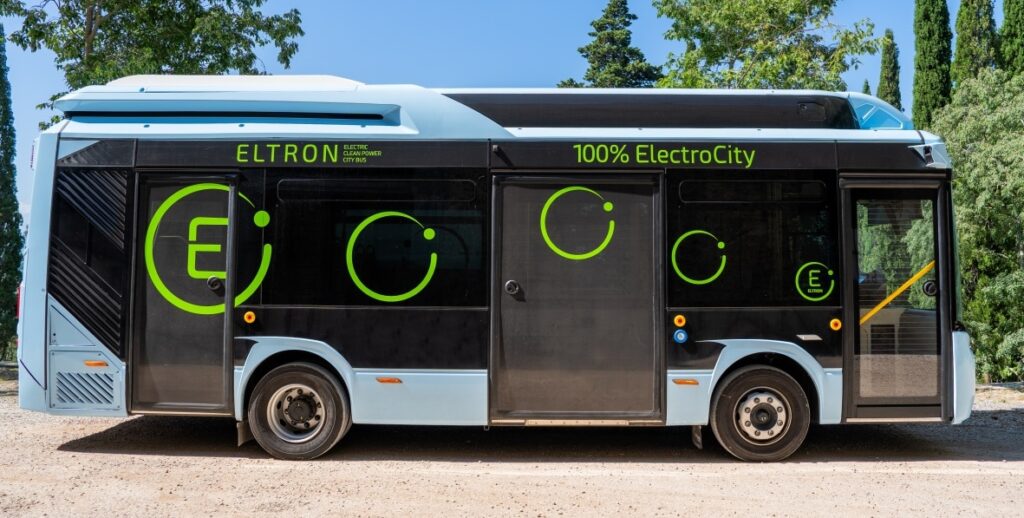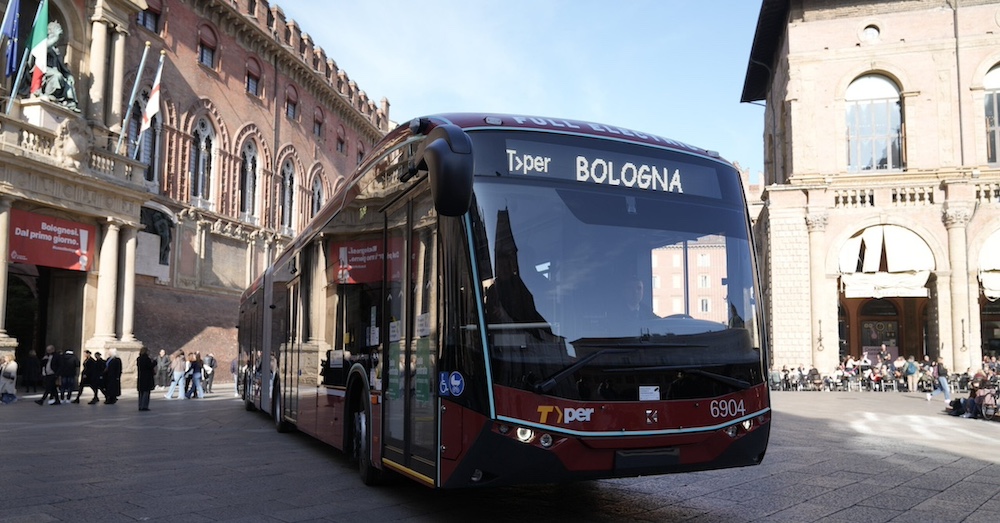With numerous electromobility projects in development or about to be implemented, Bologna is leading the transition to zero-emission public transport among Italian cities.
This is the country’s metropolis with the highest percentage of non-polluting buses, as explained in the “Urban Environment” report by the National Institute of Statistics (ISTAT).
The truth is that the transition in public transport experienced an acceleration in 2023 in Italy: the 400 electric buses registered last year would represent an increase of more than three times compared to the 121 reported in 2022.

Currently, Bologna is among the 100 European cities in the Horizon Europe mission aspiring to climate neutrality by 2030, anticipating the European Union’s (EU) goals by twenty years.
“It’s an ambitious goal because the EU has set the deadline for 2050 and we want to advance it,” says Mayor Matteo Lepore.
And he continues: “Within eight years, Bologna aims to be a completely fossil-free city, and the 90 million euros provided by the government for our hydrogen and electric transport are heading in this direction.”
Next, Mobility Portal Europe shares information about the projects that the city is implementing to drive the transition.
Bologna drives articulated battery trolleybuses
The project for trams and trolleybuses, within the framework of the expansion program of the Progretto Integrato Della Mobilità Bolognese (PIMBO) public transport, involves the reintroduction and expansion of these public transportation systems include plans for the construction of Tram Line 2.
The initiative is being propelled by funding from the Italian central government, with the first line expected to be operational by 2026.
Furthermore, the acquisition of articulated battery trolleybuses is being considered to modernise the fleet, alongside the electrification of some existing bus routes.
The plan was created to satisfy, in urban and metropolitan areas, a greater demand for public mobility with a view to an eco-sustainable and intermodal vision of passenger transport.
TPER boosts emissions-free public transportation services
In collaboration with the Municipality of Bologna, Transporto Passeggeri Emilia-Romagna (TPER) is executing an environmental strategy to provide emissions-free public transportation services throughout the urban area.
This policy is based on diversifying energy sources, employing various traction modes, aligning with guidelines from metropolitan Sustainable Urban Mobility Plans.
As an implementation method, the incorporation of electric battery buses of various sizes to suit different service needs, as well as trolleybus vehicles already in service and others in planning, would be opted for.
Additionally, TPER plans to introduce a hydrogen fuel fleet by 2026, in line with timelines set by the PNRR.
The fleet’s technological evolution plan is coordinated with the tram network’s development.
Moreover, Eltron buses, manufactured by the Umbria-based company Rampini, would be utilised.

These units belong to the “midibus” product segment, as they range from eight to ten meters in length, smaller than the standard 12 meters.
They are characterised by their usability even on the narrowest streets of urban centres and can comfortably and safely accommodate up to 48 passengers.
The first four Eltrons would enter service in the coming days.
The acquisition of these has entailed an investment of approximately two million euros, entirely funded by ministerial funds made available by the Municipality of Bologna and the Metropolitan City of Bologna, from two financing lines of the National Strategic Plan for Sustainable Mobility.
Subsequently, another seven units will follow, with delivery expected in spring 2025, with an additional investment of 3.5 million euros.
70 percent of this amount would be financed with funds channelled by the Emilia-Romagna Region, and the remaining 30 percent with TPER’s own funds.
The Rampini Eltron would be used on a rotating basis on shuttle lines that operate central routes and connections between the historic centre and mountainous areas of the city.
Alpitronic inaugurates their latest development centre
Alpitronic, the Italian manufacturer of fast charging stations, has opened a new development centre in the locality.
Its purpose is to cover software and hardware development areas, as well as cybersecurity.
The firm’s fifth headquarters, along with Bolzano and Bergamo in Italy, Munich in Germany, and Charlotte in the United States, consists of a laboratory and several offices that currently have ten employees, although they plan to double the team’s size in a few months.
“The decision to choose Bologna as a location was deliberate, as the city is known as an excellent hub for system, hardware, and software development,” stated Alpitronic executives.
The location also offers proximity to renowned research institutions such as the University of Bologna, the Academy of Automotive of Modena, and the University of Automotive Engineering of Emilia Romagna (MUNER).
The South Tyrolean company has a highly successful product in the market with its Hypercharger charging stations, now also available in a version with charging power of up to 400 kilowatts or 2×200 kilowatts.
Kempower installs the first eBus station in Italy
On March 25, Kempower inaugurated Italy’s first electric bus station equipped with the company’s charging solutions on Via Ferrarese, Bologna.
The depot offers up to 20 simultaneous charging points and is operated by Transporto Passeggeri Emilia-Romagna (TPER), one of the leading national zero-emission mobility companies.
It is worth noting that it is one of the largest bus stations in Europe with a capacity for 500 vehicles.

According to the corporation, as TPER expands its fleet of electric buses, the demand for charging capacity at the depot will increase accordingly.
Kempower’s modular and scalable charging solutions will allow for easy expansion of charging capacity at the depot when needed.
“The electrification of public transportation is an important step for the Municipality of Bologna in working towards its climate goals, and we look forward to further expanding our collaboration with TPER as the need for reliable charging solutions grows,” says Tommi Liuska, Sales Director of Kempower.
Read more: Kempower aims to electrify more European countries and deploy the MCS”







